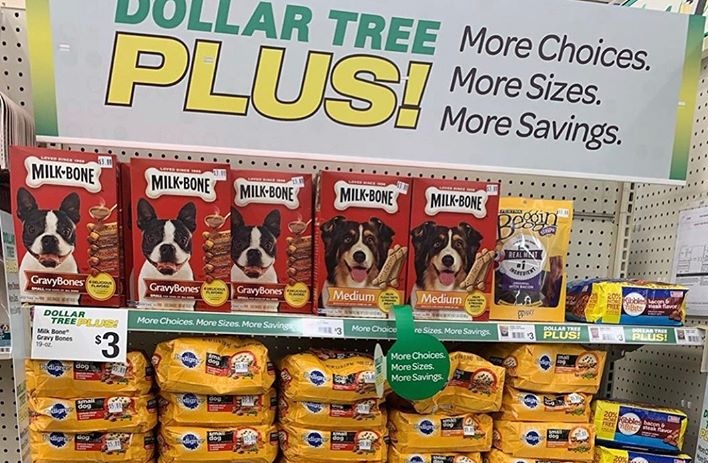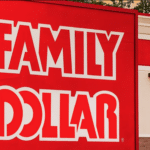
Dollar Tree wants you to know that it’s not raising prices throughout the store, even though it’s starting to sell things for more than just a dollar. Family Dollar, meanwhile, is starting to sell more things for just a dollar – and wouldn’t really mind if you think that it’s lowering prices throughout the store as a result.
That’s the gist of the pricing experiments now under way at the two dollar store chains. And reaction so far, from shoppers who were used to things the old way, is kind of mixed.
Earlier this year, the stores’ common owner announced that Family Dollar and Dollar Tree would each start testing out the other’s pricing structure. Some Dollar Tree locations, where everything is just one dollar, now feature a selection of Family Dollar-like merchandise with higher price tags. And some Family Dollar locations, where prices vary, are now selling more Dollar Tree-like items for just a dollar apiece.
In a progress report last week on the dual pricing experiments, the company said everyone seems to love the Family Dollar changes. As for Dollar Tree – it’s still early, but initial reactions to its pricing experiment do not seem quite so promising.
First to Family Dollar, where shoppers are apparently so excited about refreshed stores featuring the new dollar items, that they’re randomly embracing company executives in the aisles. “It’s not uncommon to get hugs and thanks from both customers and store people because the people really enjoy the store environment, so we’re very excited about it,” Chief Financial Officer Kevin Wampler told investors, with perhaps just a touch of hyperbole.
But before you rush out to your local Family Dollar to join in the hype and the hugs, be warned that the lower-priced items can play psychological tricks on you – and if that keeps happening, company executives may end up being the ones hugging you.
In Family Dollar locations participating in the pricing experiment, dollar items are spread across 21 sections in the store, Wampler explained. And one of the effects is that “it creates a halo of strong price impression for our customers,” he said. In other words, because the dollar items are stocked alongside regular items and not stuck in an out-of-the-way “dollar section”, it “looks like prices are lower” throughout the store, Wampler said, and shoppers are spending more as a result.
As for Dollar Tree, the pricing experiment there seems to be having the opposite effect so far.
“We’ll be offering a range of items across a number of categories,” CEO Gary Philbin explained. “We’ll be testing primarily at price points of $3, $4 and $5, and the price will be displayed in four-foot sections or end caps clearly branded as ‘Dollar Tree Plus!’ in order to minimize confusion with our dollar values that our customers have come to expect.”
The pricing test “officially launched a few weeks ago with products hitting the shelves of the first batch of stores,” Philbin said. “We are in the process of rolling it out to more than 100 test stores.” He didn’t say where exactly the test stores were located, but based on what sharp-eyed shoppers have been saying online, San Antonio appears to be one of the first markets to see the “Dollar Tree Plus!” items.
“I just want to emphasize, we’re not raising retails on the dollar items that our folks have come to love and count on,” Philbin pointed out. “This is not raising items from our $1 price point to a higher retail. This is about adding new items and categories.”
Regardless, it seems that a majority of shoppers commenting in shopping and couponing groups online, who have seen or heard about the pricing experiment, aren’t having it.
“If something’s not broke, don’t try to fix it! I like Dollar Tree being just that – $1.00,” one commenter wrote. “If we wanted to go to a store like that, there’s already 3 stores I can think of off the top of my head that have prices like this,” another said. “Dollar Tree is just getting greedy. I refuse to buy any product from them that costs more than $1,” a third commenter wrote.
To be fair, some of the commenters appear to be unclear about how the test is supposed to work, and may not have heard the company’s assurances that prices are not going up across the board. But others are aware of that promise – they just don’t necessarily believe it.
“How long will it take for the $1 only items to be in one little area and the ‘Plus’ takes over?” one shopper wondered. “They will start out with that section and as people get used to it, expand more and more until they’re not a Dollar Tree anymore,” another commented. “Look at Target – the Dollar Spot started out awesome, then things went to $2 or $3 and now nothing is ever less than $3,” another commenter observed.
And leave it to couponers to point out certain drawbacks to the pricing experiment that others may not have considered. “The ‘Plus’ items are from Family Dollar, but you get a better deal at Family Dollar since they have the Smart Coupons,” one couponer wrote in reference to Family Dollar’s digital coupon program. “Some people are going to try to use coupons on some of those name brand items and we all know Dollar Tree’s registers have a problem with some coupons,” another couponer commented. “And don’t forget those who will find a $4 item misplaced somewhere else and then complain that it should be a dollar because it basically wasn’t in the ‘Plus’ section.”
If that sentiment holds, expect to hear a big “I told you so” from the company’s CEO. Philbin launched the Dollar Tree pricing test reluctantly, under pressure from a major shareholder who called the store’s $1 price point arbitrary and outdated.
“Our previous testing of this concept has demonstrated that ‘Everything’s A Dollar’ is an incredibly powerful part of our value proposition,” Philbin told investors back in March. About a dozen years ago, Dollar Tree tried selling some items priced at more than a dollar in about 50 stores, and even operated a separate chain called Deals that sold items at multiple price points. But Deals ultimately closed, and Dollar Tree stores returned to “Everything’s a Dollar” after testing showed that customers didn’t like having higher-priced items mixed in with dollar items. “Customers continue to choose Dollar Tree for the values they are able to get for only $1 for every item,” Philbin insisted.
But investors demanded another test, so Philbin is giving them another test. And it comes at a somewhat inopportune time, as tariff concerns have consumers wary of higher retail prices as it is.
So as “Dollar Tree Plus!” rolls out to more stores, if shoppers’ reaction continues to prove the CEO right – he may be the one hugging customers in the aisles if this experiment, like the last one, ultimately comes to an end.
Image source: Instagram/@mrsblackgold















